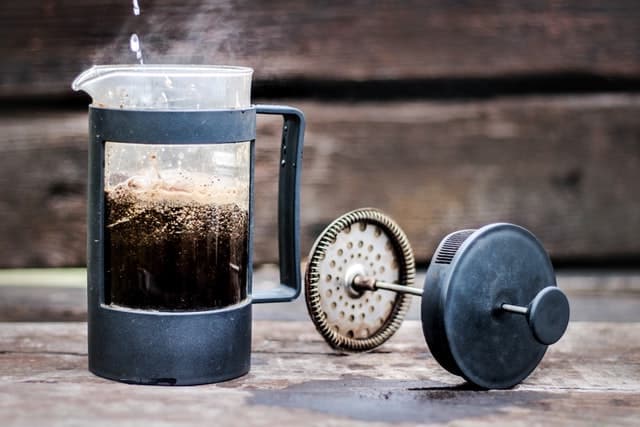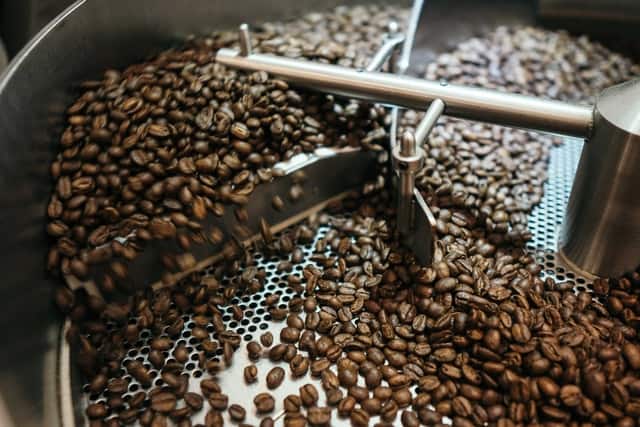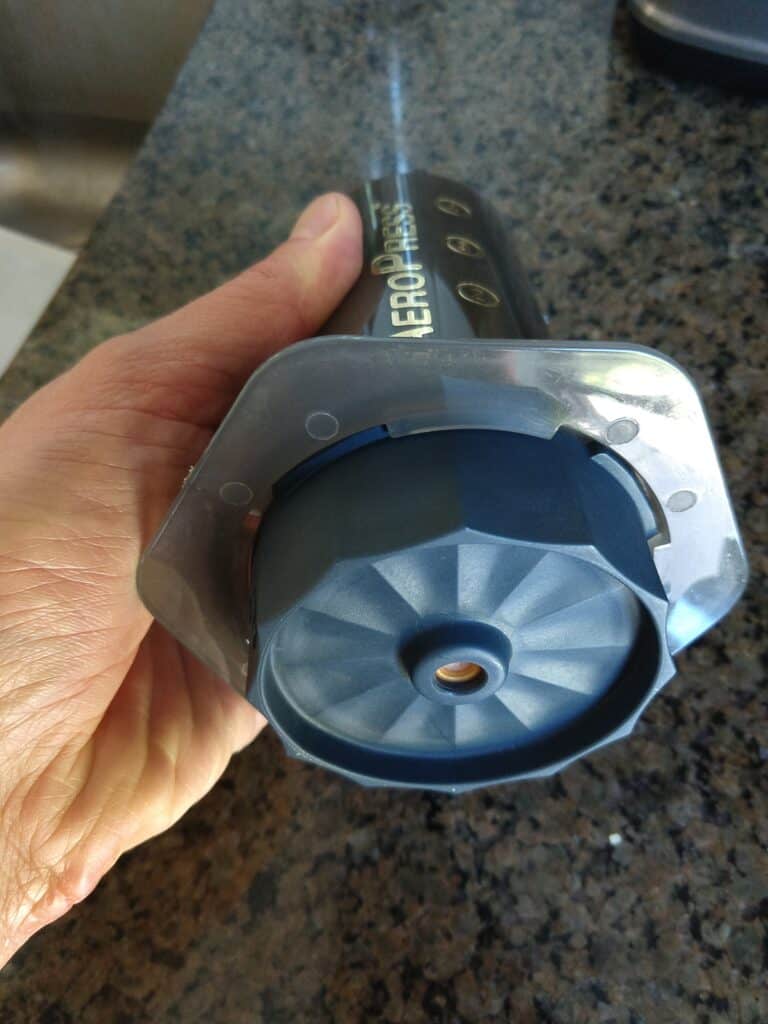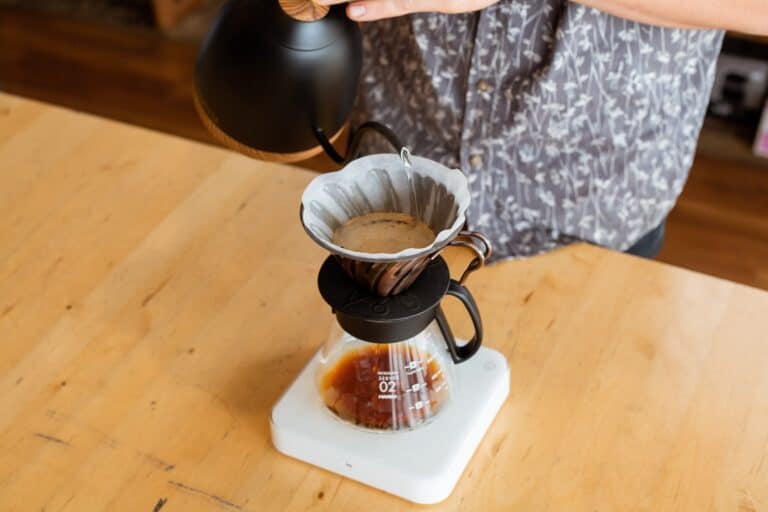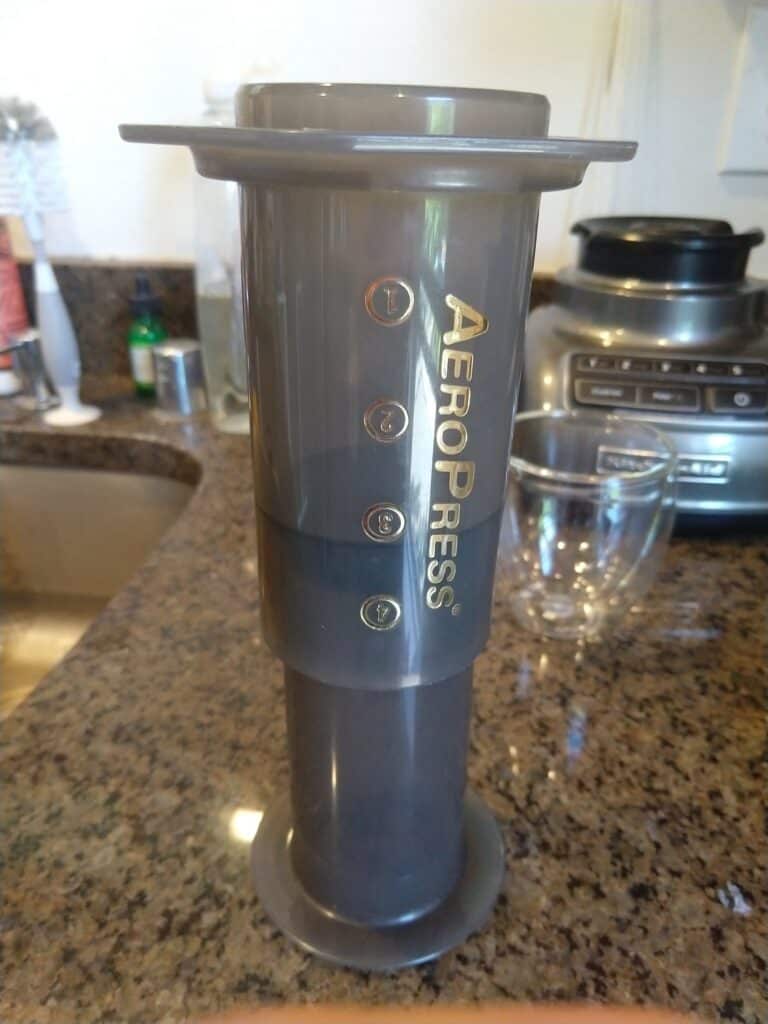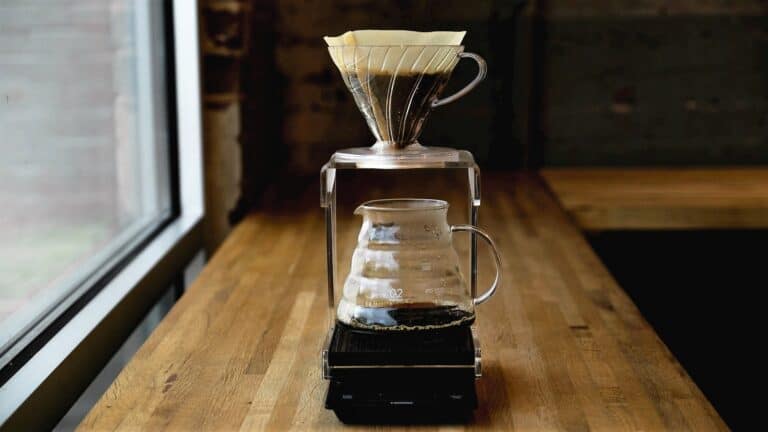Pour Over Vs. French Press: Is There A Winner?
Pour over and French press coffee are two wildly popular brewing methods.
Some like the smoothness and low-effort prep of the former; others don’t mind a more elaborate process that yield a cleaner cup.
Both are delicious and can be quite satisfying to sip, but they have some major differences that suit different palates and situations.
In this this article, I’ll compare them on several key points, then get into a little more detail on how each of those factors affects your coffee-drinking experience.
Contents
French press is easier to prepare
First and foremost, pour-over coffee is a tad more hands-on than French press. Both methods essentially do the same thing – extract delicious flavor from ground beans into your cup.
But with French press you simply heat water to boiling (or close), push it over coarsely ground beans in a carafe, then let it steep—no pouring or watching required.
With pour over, you have to heat water and add it in a slow stream (via a gooseneck kettle) while carefully monitoring how fast the liquid is dripping through your coffee grounds so that they don’t get over- or under-extracted (FYI: extraction is a helpful topic for any coffee fan to understand, so check out this guide later).
This takes some time to master, but once you’ve got it down pat, it’s extremely satisfying.
Both methods benefit from a scale, since it’s impossible to repeat a good brew or troubleshoot a bad one otherwise. But a French press with volume markings is less likely to go wrong if no scale is available.
Pour over is easier to clean up
Cleaning up might sound trivial, but seeing as you’re on the hook for it as part of the coffee-drinking experience, it’s worth knowing exactly what you’re in for!
When you finish a pour-over brew, you simply dump the spent grounds and filter in the trash/compost, rinse the brewer clean, and call it good.
A little soap once in a while doesn’t hurt, but it’s not often necessary.
With French press, you’ve got to get the grounds out of the metal filter and the little metal disc thingy (I’m sure it has a name…) that supports the filter. Manageable, but often a minute or two of work.
It’s also important to use soap and water every time, or as close to every time as you can. The prolonged contact between the coffee and carafe means oil accumulate rapidly. And nobody wants to taste the rancid remnants of last Sunday’s brew.
Pro tip: you’ll make life easier by choosing one with a glass carafe. Sure, it’s more fragile than steel or whatever synthetic materials are available, but it retains the least oils and is therefore quickest to wash.
Bonus pro tip: with glass, take care not to plunge it rapidly up and down to try to clean the filter screen. Any sharp edges around the filter/filter support might scratch the glass, creating a rougher surface that’s tricky to clean.
French press for body, pour over for clarity
The metal mesh filter of a French press has relatively large openings, so more tiny particles can pass through. And it doesn’t absorb any oils, so you’ll get the most viscous, full-bodied brew possible…but often to the point of sludge, if you agitate it after steeping!
The paper filter of a pour-over cone has tiny pores and is highly absorbent. It allows less coffee oils and practically no particles in the cup. The mouthfeel will tend toward the tea-like end of the spectrum (if not quite that delicate) while you might describe the flavor as “clear” or “pure.”
You can bridge the difference by using a metal pour-over filters. They’re a massive headache to clean…but they’re an option.
Likewise, you can get the smoother body of immersion brewing with an AeroPress, whose paper filters keep the sludge out—and simplify cleaning.
French press suits dark roasts (but both are fine)
French press makes it easier to get a well-balanced cup of dark-roasted coffee. The risk with dark roasts is creating harsh flavors through over-extraction; immersion methods like French press make that less likely.
You can certainly brew smooth and mellow dark roasts as a pour over, too. It’s just trickier to pull off. Getting appropriate draw-down time (how long it takes the water to drip through) may require a fine grind that also emphasizes harsher notes.
Pour over is ideal for light roasts
Pour overs bring out fruity, floral, or herbal notes, which are often why we buy light roasts.
French press tends to mute all of those. That’s not a bad thing—it’s strictly a matter of preference—but it does undermine their purpose.
Now, you can in fact get a good light-roast brew with a French press. The key, in my experience is to use a finer grind and longer extraction time than you normally might. Furthermore, take extra care not to move the plunger or swirl the carafe before you serve. That would agitate the sediment and a create a muddiness that hides all the complex, subtle flavors!
Is French press coffee less acidic?
It’s often claimed that French press is less acidic, but that’s not categorically true.
In terms of acidic flavor, the richer body and thicker mouthfeel can mask a lot of it. That’s strictly a matter of taste, and almost impossible to measure objective.
In terms of actual chemical acidity (as in pH), there’s no reason to expect any difference, either. Both are brewed with near-boiling water, and since heat is the conduit by which acidic compounds reach your cup, it’s roughly the same result.
Cold brew would be the truly low-acid choice. And since you can make cold brew in a French press, I suppose it’s the less acidic brewer in a very roundabout way!
Is French press coffee smoother?
French press, like all immersion methods, tends to be smoother.
That’s partly because immersion leads to more even extraction (since the water cannot carve out and over-extract channels through the bed). It’s also because the greater body and oils will tone down what we’d normally perceive as harsh.
But, speaking of perception, smoothness is a bit subjective. What some folks find overpoweringly harsh, others might find bold and complex!
Is French press coffee stronger than pour over?
The mouthfeel and body of French press often creates an impression of stronger coffee, but it’s not significantly stronger in any measurable way.
The closest we can get is to look at total dissolved solids (TDS), which is the percentage of the brew that’s actually dissolved coffee substance.
(Note: the solids you see at the bottom of the cup are suspend, not dissolved. Otherwise, you wouldn’t see them!)
According to coffee accessory manufacturer Fellow, typical TDS values are 1.4-1.7 for French press versus 1.2-1.5 for pour over. Yes, slightly different, but not very. For comparison, an espresso shot would measure around 8-12!
Does pour over or French Press have more caffeine?
The finer grind size of pour over may yield more caffeine than French press. However, there are too many brewing variables to make a meaningful comparison.
For instance, light roasts have more caffeine than darker roasts. Pour over coffee drinkers tend to be the same folks who prefer lighter roasts, so they’ll happen to consume more caffeine per cup, but it’s not because of the brewing method itself.
Why could French press coffee be bad for you?
French press uses metal filters that do not absorb any coffee oils. Those oils contain lipids called sterols, which are believed to raise cholesterol in some (but not all) people.
By contrast, paper filters should eliminate most sterols, so sensitive individuals may respond better.
Conclusion: why not both?!
French press is simpler to brew but more complicated to clean up than pour over.
Pour over brings out acidity and vibrant fruit or floral notes in a way no other method can…but French press has a pleasantly rich, smooth mouthfeel (and can coax more sweetness out of a dark roaster).
In fact, these trade-offs are significant enough that both methods deserve a place in any coffee fan’s cupboard.
You’ll discover—if you haven’t already—that trying out new brewing gear just might be half the fun!

